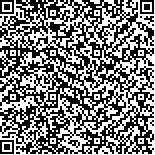| Quote
: |
刘笑蓉,李硕夫,刘湘丹,王志辉,曾娟,周日宝.基于TLR4/MyD88/NF-κB信号轴探讨闹羊花毒素Ⅲ对类风湿关节炎的影响[J].湖南中医药大学学报英文版,2023,43(6):992-998.[Click to copy
] |
|
| |
|
|
| This paper
:Browser 826times Download 593times |
| 基于TLR4/MyD88/NF-κB信号轴探讨闹羊花毒素Ⅲ对类风湿关节炎的影响 |
| 刘笑蓉,李硕夫,刘湘丹,王志辉,曾娟,周日宝 |
| (湖南中医药大学, 湖南 长沙 410208;湖南中医药大学第一附属医院, 湖南 长沙 410007) |
| 摘要: |
| 目的 本研究旨在探讨闹羊花毒素Ⅲ调控TLR4、MyD88和NF-κB的机制,以及闹羊花毒素Ⅲ对类风湿关节炎(rheumatoid arthritis, RA)的影响。方法 RA大鼠模型通过Ⅱ型胶原诱导构建。随机将Wistar大鼠分成6组(n=8):假手术组(Sham组)、RA模型组(Model组)、阳性药物雷公藤组[TWG组,50 mg·(kg·d)-1]、闹羊花毒素Ⅲ低剂量组[R-Ⅲ Lo组,0.06 mg·(kg·d)-1]、中剂量[R-Ⅲ Mi组,0.12 mg·(kg·d)-1]和高剂量组[R-Ⅲ Hi组,0.24 mg·(kg·d)-1]。测定各组大鼠的关节炎指数(arthritis index, AI);采用HE染色、ELISA、Western blot和RT-qPCR检测闹羊花毒素Ⅲ对TLR4/MyD88/NF-κB信号轴及RA的影响。结果 与Model组比较,闹羊花毒素Ⅲ处理显著降低了RA大鼠的AI评分(P<0.05)。闹羊花毒素Ⅲ对滑膜组织的恶性增生和炎症细胞浸润有明显的抑制作用。与Model组比,闹羊花毒素Ⅲ各剂量组的TNF-α、IL-1β、IL-6、IL-17、VEGF、MMP-2、MMP-9、TLR4、MyD88、p-NF-κB/NF-κB因子的水平降低且呈浓度依赖性(P<0.05)。与TWG组比,R-Ⅲ Lo和R-Ⅲ Mi组的。TNF-α、IL-1β、IL-6、IL-17、VEGF、MMP-2、MMP-9、TLR4、MyD88、p-NF-κB/NF-κB因子的水平升高(P<0.05),而R-Ⅲ Hi组无显著差异(P>0.05)。结论 闹羊花毒素Ⅲ可以通过下调TLR4、MyD88、NF-κB因子的表达水平来改善RA。本研究为利用闹羊花毒素Ⅲ治疗RA提供了一定的实验基础。 |
| 关键词: 闹羊花毒素Ⅲ|TLR4/MyD88/NF-κB信号轴|类风湿关节炎|羊踯躅|炎症|血管生成 |
| DOI:10.3969/j.issn.1674-070X.2023.06.005 |
| Received:November 09, 2022 |
| 基金项目:湖南省自然科学基金项目(2022JJ80086);湖南省卫生健康委员会计划研究项目(D202302078705);湖南省大学生创新创业训练计划项目(2022-5313);湖南省教育厅科学研究项目(19C1384);湖南省中医药管理局科研计划项目(2021161);湖南中医药大学中药学一级学科开放基金项目(2020ZYX01);湖南中医药大学青苗计划(校行人字〔2017〕25);湖南省一流学科中药学(校行科字〔2018〕3);2020年湖南省一流本科专业建设点(湘教通〔2020〕248号):2020年国家级一流本科专业建设点(教高厅函〔2021〕7号):中药学专业。 |
|
| Effects of Rhodotoxin Ⅲ on rheumatoid arthritis based on TLR4/MyD88/NF-κB signal axis |
| LIU Xiaorong,LI Shuofu,LIU Xiangdan,WANG Zhihui,ZENG Juan,ZHOU Ribao |
| (Hunan University of Chinese Medicine, Changsha, Hunan 410208, China;The First Hospital of Hunan University of Chinese Medicine, Changsha, Hunan 410007, China) |
| Abstract: |
| Objective To investigate the effects of rhodojaponin Ⅲ on rheumatoid arthritis (RA) by regulating toll-likereceptor 4 (TLR4), myeloid differentiation factor 88 (MyD88), and nuclear factor-kappa-B (NF-κB). Methods Type Ⅱ collagen was used to construct the RA rat model. Wistar rats were randomly divided into 6 groups, with 8 rats in each group: normal feeding group (sham group), RA model group (Model group), positive drug tripterygium wilfordii group [TWG group, 50 mg·(kg·d)-1], low-dose Rhodojaponin Ⅲ group [R-Ⅲ Lo group, 0.06 mg·(kg·d)-1], medium-dose group [R-Ⅲ Mi group, 0.12 mg·(kg·d)-1], and high-dose group [Rhodojaponin Ⅲ Hi group, 0.24 mg·(kg·d)-1]. The arthritis index (AI) of the rats was scored. Meanwhile, HE ELISA, Western blot, and real-time quantitative PCR (RT-qPCR) were used to detect the effects of Rhodojaponin Ⅲ on TLR4/MyD88/NF-κB signal axis and RA. Results Rhodojaponin Ⅲ significantly reduced the AI scores of RA rats compared with model group (P<0.05) and it effectively inhibited the development of malignant hyperplasia and inflammatory cell infiltration into synovial tissue. Meanwhile, compared with model group, the expresson levels of the tumor necrosis facor-α (TNF-α), interleukin-1β (IL-1β), interleukin-6 (IL-6), interleukin-17 (IL-17), vascular endothelial growth factor (VEGF), matrix metallopeptidase-2 (MMP-2), matrix metallopeptidase-9 (MMP-9), TLR4, MyD88, and phosphor-nuclear factor-kappa-B (p-NF-κB)/NF-κB were reduced in R-Ⅲ Lo, Mi, and Hi groups (P<0.05). Compared with the TWG group, the levels of TNF-α, IL-1β, IL-6, IL-17, VEGF, MMP-2, MMP-9, TLR4, MyD88, p-NF-κB/NF-κB factors increased in the R-Ⅲ Lo and R-Ⅲ Mi groups (P<0.05), while no significant differences were observed in the R-Ⅲ Hi group (P>0.05). Conclusion Rhodojaponin Ⅲ can improve RA by down-regulating the expression levels of TLR4, MyD88, and NF-κB. This paper offered a solid experimental foundation for the use of Rhodojaponin Ⅲ in the treatment of RA. |
| Key words: Rhodojaponin Ⅲ|TLR4/MyD88/NF-κB signal axis|rheumatoid arthritis|Yangzhizhu [Rhododendron molle (Blum) G.Don]|inflammation|angiogenesis |
|

二维码(扫一下试试看!) |
|
|
|
|


